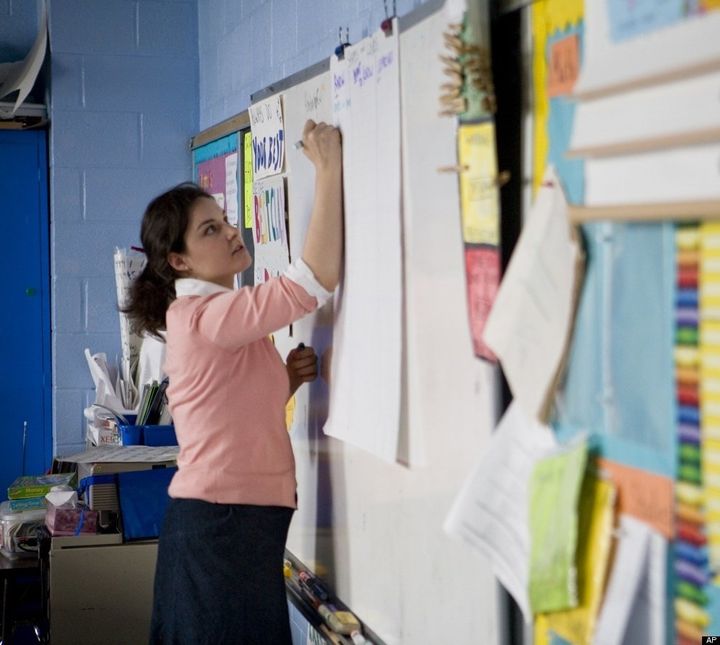
There's been tremendous controversy over using student test scores to measure which teachers are most effective. Through its "Race to the Top" grants, the Obama Administration has encouraged states to use test scores as part of the mix, but not make them the sole determinant.
While teachers, politicians, talk show pundits and parents debate the issue, New York City is already using student test scores to measure its schools. And the results have provided lots of confusion.
Mayor Michael Bloomberg's administration took a tip from Florida when it introduced A-F letter grades for schools back in 2007. These report cards are called progress reports because they measure how much progress schools make in helping to increase student achievement.
Eighty-five percent of a school's grade is based on state test scores. The remaining 15 percent is based on surveys of a school's environment by teachers, parents and students. But it's not really so simple. Within this formula, the city compares individual schools to 40 other "peer schools." It also compares them to the citywide average.
This way, the city can see whether a school in a wealthy neighborhood of Brooklyn, for example, has made more progress with its fourth graders than a school in Harlem. If the school in Harlem made more progress even though it had lower scores than the school in Brooklyn, it can wind up with an A while the Brooklyn school gets a C. Schools also get extra credit if scores go up for English Language Learners and special education students, as well as others considered at a higher academic risk.
Last year, scores on the state's math and reading tests went up by more than 10 percentage points in New York City. As a result, 97 percent of city schools got A's and B's. But this year, New York State decided to make its tests harder to pass. The state acknowledged that its exams had gotten too easy and is now phasing in higher, national standards. By requiring students to get more correct answers this year, the percentage of students deemed proficient fell by more than 25 points in New York City and throughout the state.
The city tried to compensate for every school's lack of progress by grading them on a curve. Only 60 percent of schools got A's and B's when the grades came out in late September. There were also more D's and F's. Not surprisingly, principals groused when their grades went down.
The Earth School in Manhattan's East Village went from a B to a D. The principal of the well-regarded elementary school, Alison Hazut, told WNYC Radio the grading system is flawed because it still relies on a single year's scores. "All the small schools like ours, especially schools that are trying to be diverse and progressive, we're all fluctuating all over the map so how can that be?" she asked.
The city's answer is that it needs to rely on a single year's scores to avoid letting schools slide based on prior accomplishments, and to reward schools that make improvements. It also claims that its progress reports have been getting more accurate over time as it adjusts the formulas. But principals, teachers and parents are still confounded when they see schools with excellent reputations wind up with lower grades than those where only 40 or 50 percent of students are considered proficient.
Now that the city and the state are moving ahead with a new way of measuring teachers, everyone will be watching the role of test scores. And if the progress reports are any measure, there will be lots of questions when teachers finally do get their own marks.